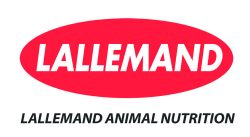Achieve Higher Quality Silage Next Year |
|
|
Take stock of silage challenges and overcome them to improve quality, increase profitabilityThis item has been supplied by a forage marketer and has not been edited, verified or endorsed by Hay & Forage Grower. “Even on well-run farms, every producer is likely to experience some silage quality issues,” Dr. Charley says. “These issues are only failures if we don’t learn from them. In fact, problems can give producers important direction on what went wrong. Then, we can fix the problem next time we’re planting, harvesting, ensiling or feeding out.” To get the best silage from the crop planted, there are a number of management factors that are important including stage of maturity at harvest, moisture level, chop length, speed of filling the silo, packing density and covering and properly sealing the silo. “To end up with top quality silages you need to start with top quality forage crops at harvest and then use good silage management skills,” Dr. Charley notes. ”The quality of the forage at harvest is the primary factor in determining silage quality. After that, we are trying to preserve as much of that quality as possible by getting as many management factors as close to ideal as possible.” During the filling of the silo, oxygen is the main enemy as it will slow down the ensiling fermentation and allow aerobic organisms to grow. “At best, this means that dry matter and nutrients are lost. They simply get burned up by these aerobic organisms,” says Dr. Charley. “But it can be much worse, this may allow other spoilage organisms to grow, producing toxins that can really affect production levels and even herd health and fertility. So it is really important to fill the silo quickly, pack well and then cover and seal the crop to allow the ensiling fermentation to progress.” To help ensure a rapid and efficient ensiling fermentation and minimize fermentation losses, the key is to use a research-proven inoculant proven to dominate the fermentation and produce a quick pH drop. Promoting a fast pH drop can also help stabilize forage and reduce yeast growth, which is a major cause of silage heating. For instance, the lactic acid bacteria Pediococcus pentosaceus 12455 provides an efficient, fast fermentation, fueled by sugars generated by high activity enzymes. “To minimize spoilage at feedout, when oxygen again infiltrates the silage mass, it is important to stop yeasts from growing as these are the microbes that kick off spoilage in silage,” Dr. Charley says. “The high dose rate Lactobacillus buchneri 40788 is reviewed by the FDA and allowed to claim efficacy in preventing the growth of yeasts and molds in silages and HMC.” After reviewing harvesting and filling procedures, be sure to examine feedout protocols. Silage is again exposed to oxygen during feedout, making it vulnerable to aerobic instability. Use good face management, keeping a clean, tight exposed surface. Do not allow silage to sit in piles and feed out at the rate required to prevent heating. Dr. Charley advises producers to check that the ration is balanced properly around the silage. This helps achieve the maximum production possible and avoid issues that can arise from feeding too much, or too little, fermentable carbohydrate, e.g. Sub Acute Ruminal Acidosis (SARA). “Once producers have identified the silage challenges based on prior experience, it’s time to make a plan to address them,” Dr. Charley says. “Be sure to get all the silage team together to review and improve the on-farm processes and practices. The entire team — from silage production through feedout — needs to be involved to make real and lasting changes.” |
